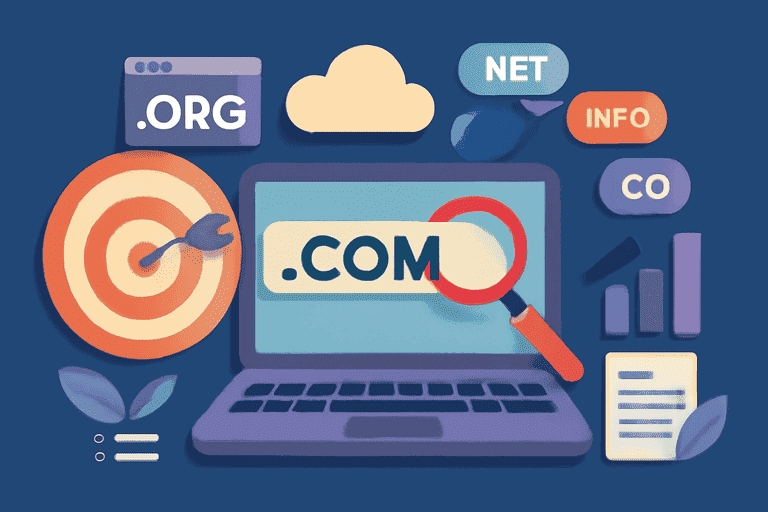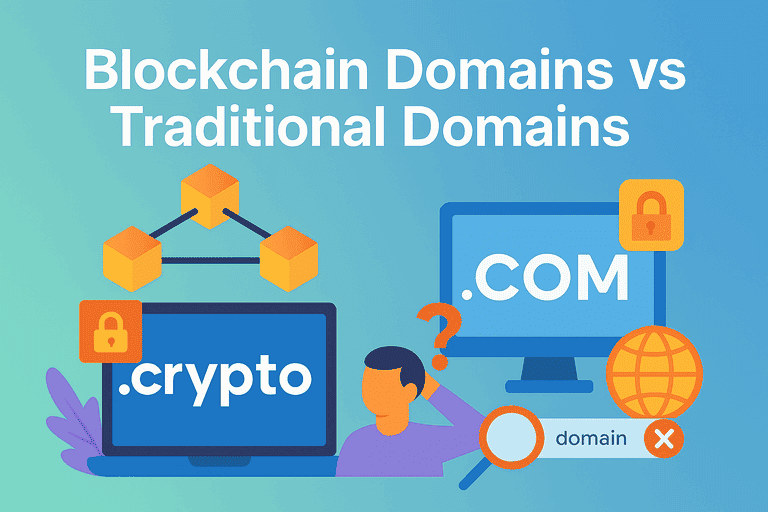In the grand architecture of your digital brand, selecting a domain name is far more than just a naming exercise. It’s a foundational decision that shapes your user’s first impression, dictates the efficiency of brand communication, and directly influences your standing with search engines. An exceptional domain is an invaluable intangible asset. This article delves into advanced strategies for domain selection, helping you build a powerful, memorable, and future-proof brand right from the starting line.

The Beauty of Brevity: The Value and Acquisition of Short Domains
In an era of information overload, user attention is a precious commodity. In the world of domains, “short” translates to a lower cognitive load and less effort to type, significantly enhancing the user experience.
The Core Value of Short Domains:
- Easy to Remember & Type: Think of
jd.comorbox.com. Users can recall and type these directly into their browser with minimal effort, bypassing search engines and reducing the risk of traffic loss. - Strong Branding Potential: Short domains often project an aura of authority and professionalism. They feel established and are easier to build a high-end, powerful brand identity around.
- Mobile-First Advantage: On the limited screen real estate of a smartphone, a short domain is easier to display, share, and looks cleaner in social media posts.
How to Acquire a Short Domain:
- Get Creative: Use acronyms (like
aiga.org), creative word combinations, or explore new Top-Level Domains (gTLDs) to craft a unique and short name. - The Aftermarket: Many premium short domains are already registered but may be for sale. You can browse domain marketplaces like Sedo, Flippa, or hire a domain broker to negotiate a purchase. Be prepared, as this often requires a significant budget.
- Backordering Expired Domains: Some domains are deleted when their owners fail to renew them. You can use services like Pool.com or SnapNames to “backorder” a domain, attempting to register it the second it becomes available. This requires good timing and a bit of luck.
Catchy & Memorable: How to Create a Domain That Spreads Easily
The best domains market themselves. They are easy to share verbally and spread organically across social networks. To achieve this, follow these principles:
- Be Clear and Unambiguous: Your domain should be easy to pronounce. Avoid letter combinations that can be confusing (e.g.,
wvs.vv) or words that might create unfortunate double meanings when combined. Say it out loud several times and ask friends what they hear. - Be Intuitive and Easy to Spell: Stick to common words and conventional spelling. If a user has to pause and think, “How is that spelled again?”, you’ve already introduced friction into your brand’s journey. While
Flickr.combecame a success, its founders wisely purchasedFlicker.comto catch spelling errors. - Find Rhythm and Rhyme: Phrases with a natural rhythm or alliteration are stickier in our minds. Think of
YouTube.comorPayPal.com. - Be Unique and Inventive: A coined, non-descriptive word (like
Google,Etsy) can be incredibly powerful. While it requires an initial investment in brand education, it creates a unique and highly defensible brand identity once established.
Keywords vs. Brand: Balancing SEO and Brand Identity in Your Domain
Including keywords in a domain name was once a dominant SEO (Search Engine Optimization) tactic. While its direct impact on ranking has diminished, a smart balance can still yield significant benefits.
- Brand First: Search engines are increasingly prioritizing brand authority. A unique, memorable brand name like
amazon.comis far more valuable in the long run than a keyword-stuffed domain likebuy-cheap-books-online.com. Users remember and trust brands, not keyword strings. - The “Brand + Keyword” Hybrid: This is a popular and effective balancing act. If your brand is “Zenith” and you sell solar panels,
zenithsolar.comis an excellent choice. It features the brand name while instantly signaling the core business to both users and search engines. - Leverage New TLDs: The new generic Top-Level Domains (gTLDs) offer a modern solution. A tech company named “Apex” could choose
apex.tech. A coffee shop could becity.cafe. This allows the main domain name to be short and brand-focused.
Our Core Advice: Prioritize a short, unique, and brandable domain. If you can naturally integrate a primary keyword without making it clunky or long, consider it a bonus. Never sacrifice brand clarity and memorability for the sake of stuffing keywords.
Avoiding Pitfalls: Common Traps to Avoid During Registration
In the final step of registering your domain, a few common mistakes can create significant problems down the road.
- Trademark Infringement: This is the most critical pitfall. Before you register, conduct a thorough trademark search (using resources like the USPTO database in the US) to ensure your chosen name doesn’t infringe on an existing trademark. Failure to do so can lead to legal action and the loss of your domain.
- Using Hyphens and Numbers: Unless they are a core part of your brand name (like
37signals.com), avoid hyphens and numbers. They are difficult to communicate verbally (“Is that the number 4 or the word for?”) and create confusion. Competitors can easily register the non-hyphenated version and intercept your traffic. - Choosing an Obscure Extension (TLD): While new TLDs offer creative options,
.comremains the gold standard in the minds of most users. If your market is global or national,.comshould be your first choice. A strange or obscure extension can sometimes be perceived as less trustworthy. - Using Fake or Incomplete Registration Info: When you register a domain, you must provide accurate owner information (known as WHOIS data). Using fake information can lead to you losing your domain in an ownership dispute, as you cannot prove you are the legitimate registrant.
- Forgetting WHOIS Privacy: Your WHOIS information is public by default. To avoid an influx of spam and unwanted solicitations, always enable “Domain Privacy” or “WHOIS Protection.” This service masks your personal data with your registrar’s information.
Your domain name is the starting block for your brand and a cornerstone of your business strategy. It deserves careful thought and deliberate planning. A name that combines the elegance of brevity, the magic of memorability, the soul of your brand, and the wisdom of SEO will become a priceless asset in a competitive marketplace. By following these advanced strategies, you can make a choice that will serve you well for years to come.










